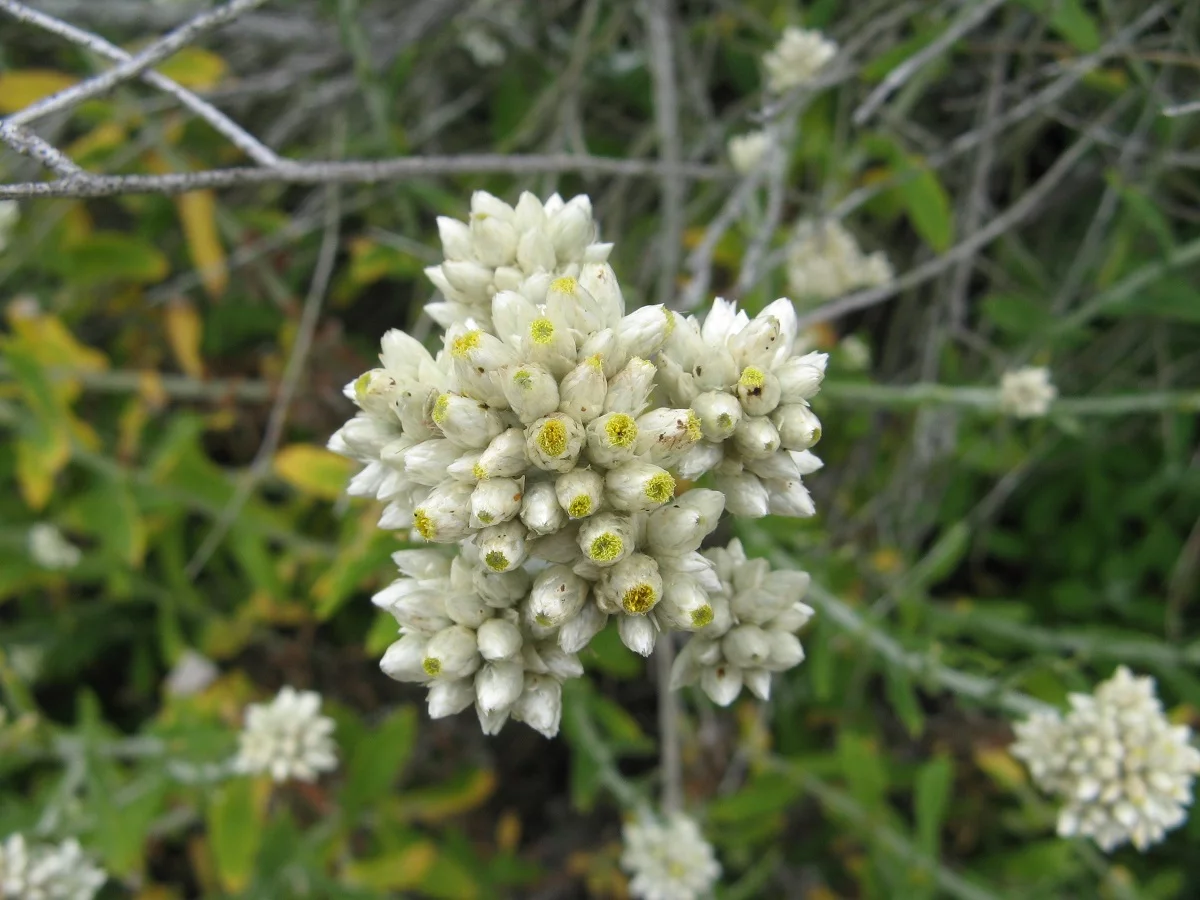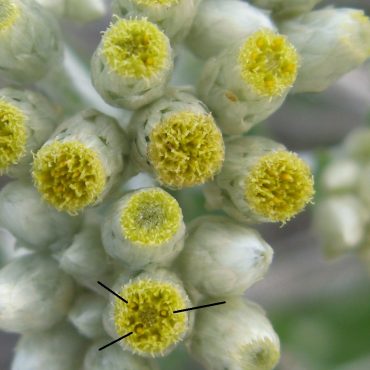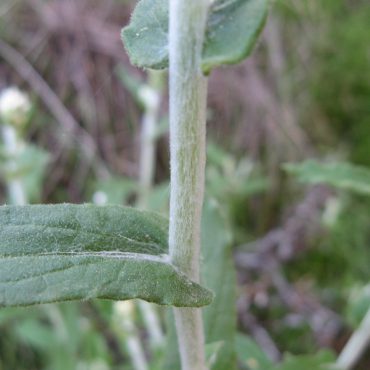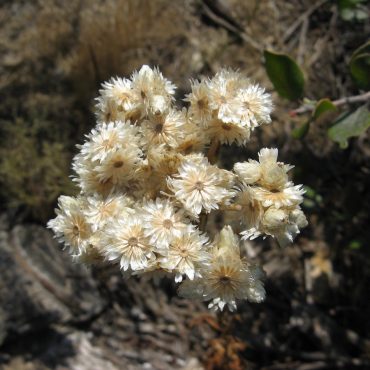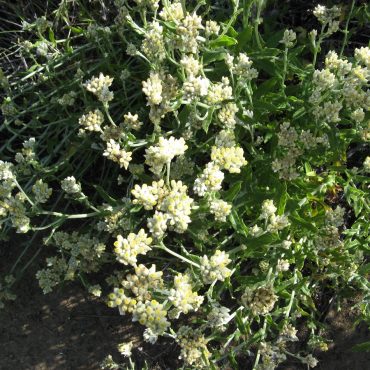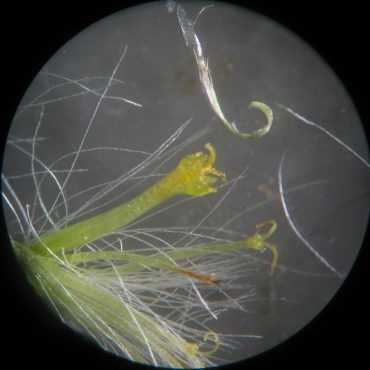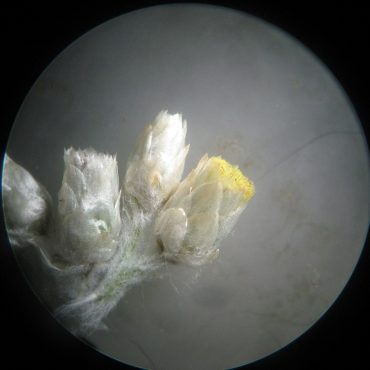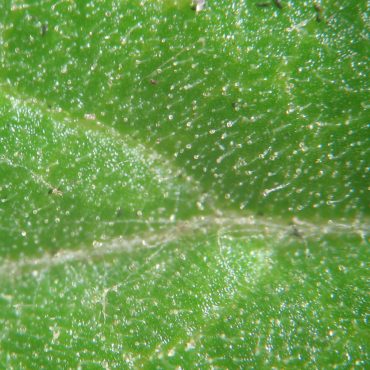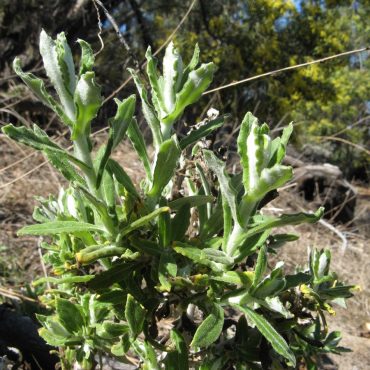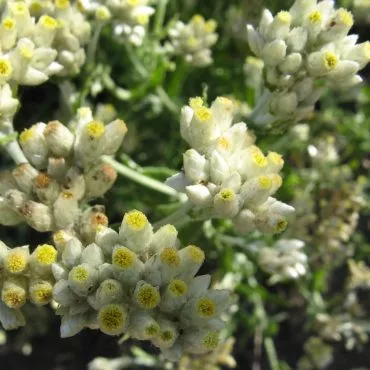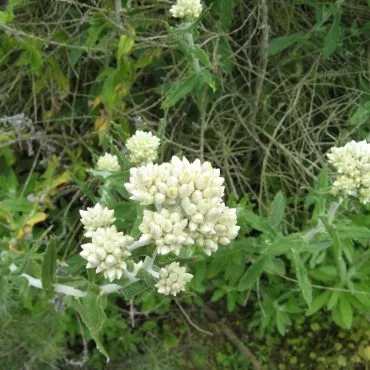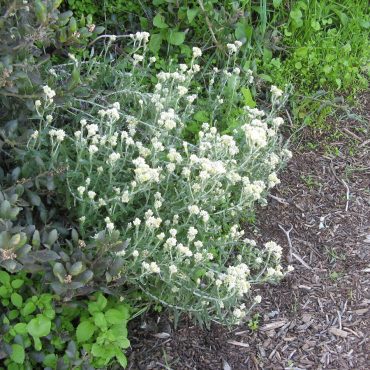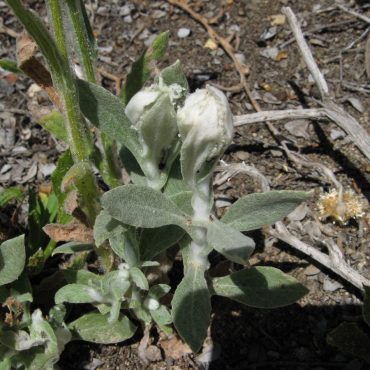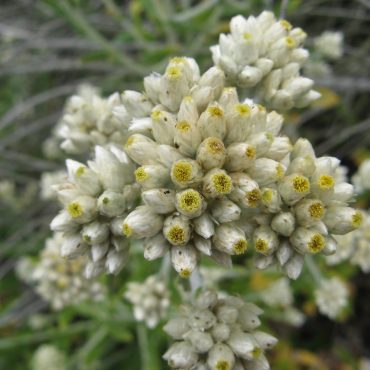Description
4,26,59
Bicolor everlasting is a small, rounded perennial herb, usually less than three feet (1 m) high, with several branches from the base. Stems and leaves are covered with small glandular hairs that give them a sticky feeling and a characteristic aroma, usually described as “lemony”. To this writer, it resembles the odor of lemon cleanser. Plants go dormant during the summer drought and resprout with the winter rains.
The stems are made pale by long white hairs. Leaves range from oblong to oblanceolate or lanceolate, usually less than 2¾ inches (7 cm) long and ½ inch (0.6 cm) wide. Leaf edges are smooth, often wavy, with the margins partially rolled under. Leaves lack petioles; their bases clasp the stem directly, with two small collars at either side of the attachment point. The upper surface is a clear or grayish green; the lower surface is covered with white woolly hairs, making it distinctly paler. The contrast in leaf color gives the plant many of its common names (e.g. bicolor everlasting, two-color rabbit tobacco, two-tone everlasting). Jepson describes a form with low contrast between leaf top and bottom; this is less common in the Reserve (or less easily distinguished from other species).
Flower heads are born in flat-topped clusters, up to six inches (16 cm) across. Each cluster is composed of 5-18 flower heads, each flower head composed of 60 – 100 tightly packed disk florets, subtended and surrounded by an urn-shaped involucre with several series of lustrous white, papery, scale-like structures (phyllaries) that largely obscure the disk florets. The phyllaries persist on the flower head long after the florets have been lost, resembling straw-colored petals and giving the plant the common name of “everlasting”
Most florets are female, roughly 1/8 inch (0.3-0.4 cm) long. The tubular corolla is greenish or cream-colored with five yellow lobes. The calyx persists as the pappus of several whitish bristles about as long as the corolla. Stamens are absent from female flowers, and the pistil consists of a one-chambered, inferior ovary and a forked style with spreading or recurved branches that extend beyond the corolla. A few central florets are bisexual. These are similar to the female florets but about twice as broad. Bisexual florets have five stamens with yellow anthers that are fused into a cylinder around the forked style. The seeds are small and may be wind-dispersed with help from the pappus. Bicolor everlasting blooms between January and May.1

